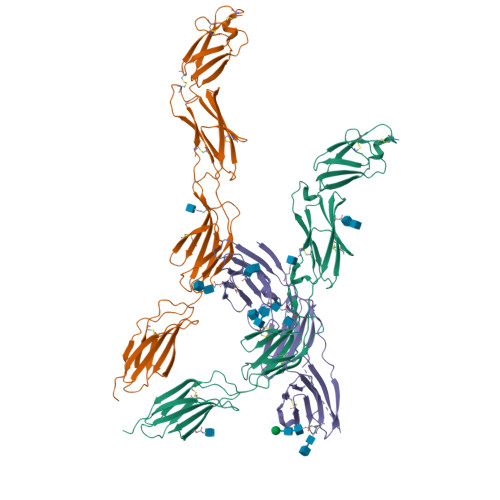Orientation-dependent CD45 inhibition with viral and engineered ligands.
Borowska, M.T., Liu, L.D., Caveney, N.A., Jude, K.M., Kim, W.J., Masubuchi, T., Hui, E., Majzner, R.G., Garcia, K.C.(2024) Sci Immunol 9: eadp0707-eadp0707
- PubMed: 39454026
- DOI: https://doi.org/10.1126/sciimmunol.adp0707
- Primary Citation of Related Structures:
8VSE - PubMed Abstract:
CD45 is a cell surface phosphatase that shapes the T cell receptor signaling threshold but does not have a known ligand. A family of adenovirus proteins, including E3/49K, exploits CD45 to evade immunity by binding to the extracellular domain of CD45, resulting in the suppression of T cell signaling. We determined the cryo-EM structure of this complex and found that the E3/49K protein is composed of three immunoglobulin domains assembled as "beads on a string" that compel CD45 into a closely abutted dimer by cross-linking the CD45 D3 domain, leading to steric inhibition of its intracellular phosphatase activity. Inspired by the E3/49K mechanism, we engineered CD45 surrogate ligands that can fine-tune T cell activation by dimerizing CD45 into different orientations and proximities. The adenovirus E3/49K protein has taught us that, despite a lack of a known ligand, CD45 activity can be modulated by extracellular dimerizing ligands that perturb its phosphatase activity and alter T cell responses.
Organizational Affiliation:
Department of Molecular and Cellular Physiology, Stanford University School of Medicine, Stanford, CA 94063, USA.






















